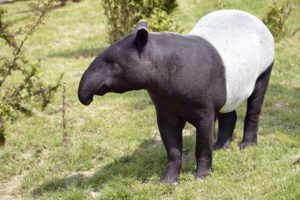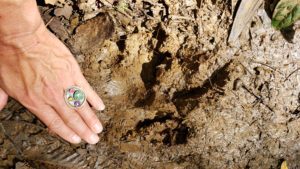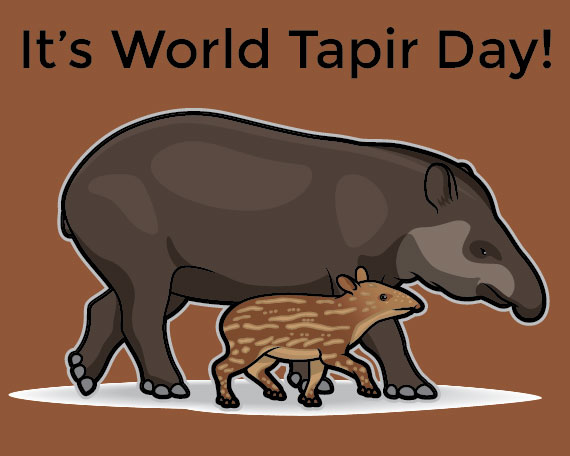It’s World Tapir Day!
Each year on April 27th we celebrate World Tapir Day. Read on to learn all about tapirs and also watch a workshop on how to sketch and paint a tapir!
Tapirs are large, primitive mammals that you’ve likely never heard of. They look a bit like a hodge-podge of other animals with a round, thick body, short legs, a small stubby tail, and most notably, a prehensile nose.

They’re often mistaken for anteaters, wild hogs, or even hippos, but are most closely related to rhinos and horses.  This is because they are odd-toed, with four toes on their front feet and three on the back. They have thick hides on bodies that taper from smaller in front to larger in back, allowing them to maneuver easily through dense forests.
This is because they are odd-toed, with four toes on their front feet and three on the back. They have thick hides on bodies that taper from smaller in front to larger in back, allowing them to maneuver easily through dense forests.
Tapirs are herbivores and use their trunk-like snout to forage for leaves. They are social animals, grazing in groups called candles, and sticking close to watering holes. You wouldn’t guess it by looking at them, but they’re excellent swimmers!
Calves learn to swim early on and can dive down to eat vegetation submerged in water. They even use their unique nose as a snorkel!
With long gestational periods of around 13 months, tapirs are slow reproducers. Mothers nurse their young anywhere from 12-18 months, keeping their calves close for up to two years
 .
.
They communicate with each other through high pitched whistles, snorts, foot-stomping, and urine marking.
Tapirs are largely found in South America, where they are the largest native land mammal. The Malayan tapir in Asia is the largest species, and the only one found outside of the Americas.

Malaysian Tapir
They’ve roamed the earth for over 20 million years, as evidenced by fossils dating back to the early Oligocene period. In central Oregon, where I live, exists an extensive fossil record of tapir ancestors, which browsed the then-tropical forests alongside their horse and rhino relatives!

But their future is uncertain due to poaching and loss of habitat.
All four species of tapir are on the IUCN Red List. The mountain and Baird’s tapirs are endangered, having decreased in population by more than 50% over the past 33 years, and are expected to continue to decline drastically in numbers.

Baird’s Tapir by James Adams
The Asian tapir is also endangered due to habitat loss, and the Brazilian tapir is listed as vulnerable, having decreased by 30% over the past three generations.

Brazilian Tapir by James Adams
Known as the “gardeners of the forest”, tapirs play an important role in maintaining biodiversity in their habitats. They disperse seeds and recycle nutrients, which are important roles in maintaining the integrity of the ecosystems in which they live.

Tapir footprint in Costa Rica
Conservation of these captivating animals is critical. Organizations such as the Tapir Specialist Group, Global Wildlife Conservation, and The San Diego Zoo, are advocating to spread awareness and save tapirs in the wild.
Sketching Workshop on Tapirs
Learn lots more about tapirs below in the recording of my live online workshop I taught on the tapir family. In the video, I introduce you to these rare, elusive mammals of the rainforest and then I lead you through a step-by-step sketching tutorial on drawing an adorable Baird’s Tapir calf.
If you’d like to follow along, I suggest gathering some pencils, paints and downloading the Tapir Sketching Cheat Sheet, then click the image below to watch the 70-minute long workshop. Enjoy!
Learn More About Tapirs
- National Geographic
- Ted Talk: 10 things you need to know about tapirs
- The San Diego Zoo
- Tapir Specialist Group
- Global Wildlife Conservation
- Tapirs key to Amazon forests return
- World Tapir Day website
Youtube Videos of Tapirs








